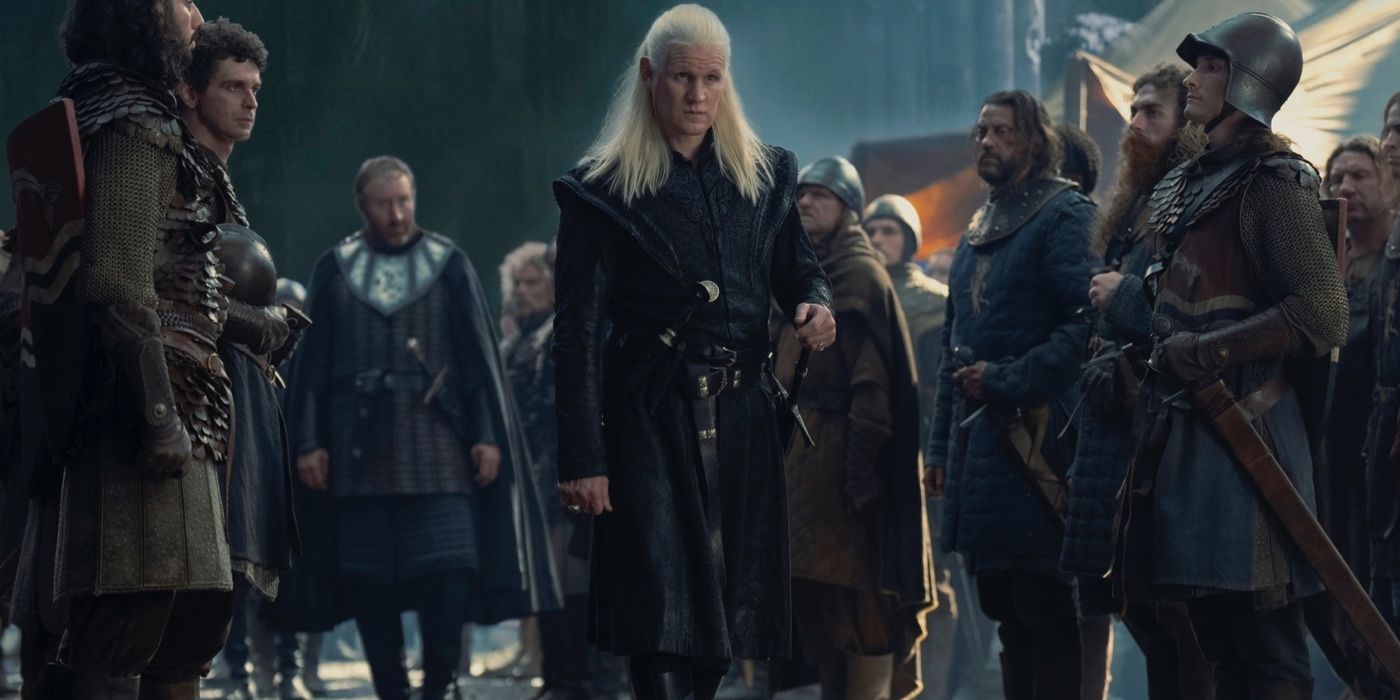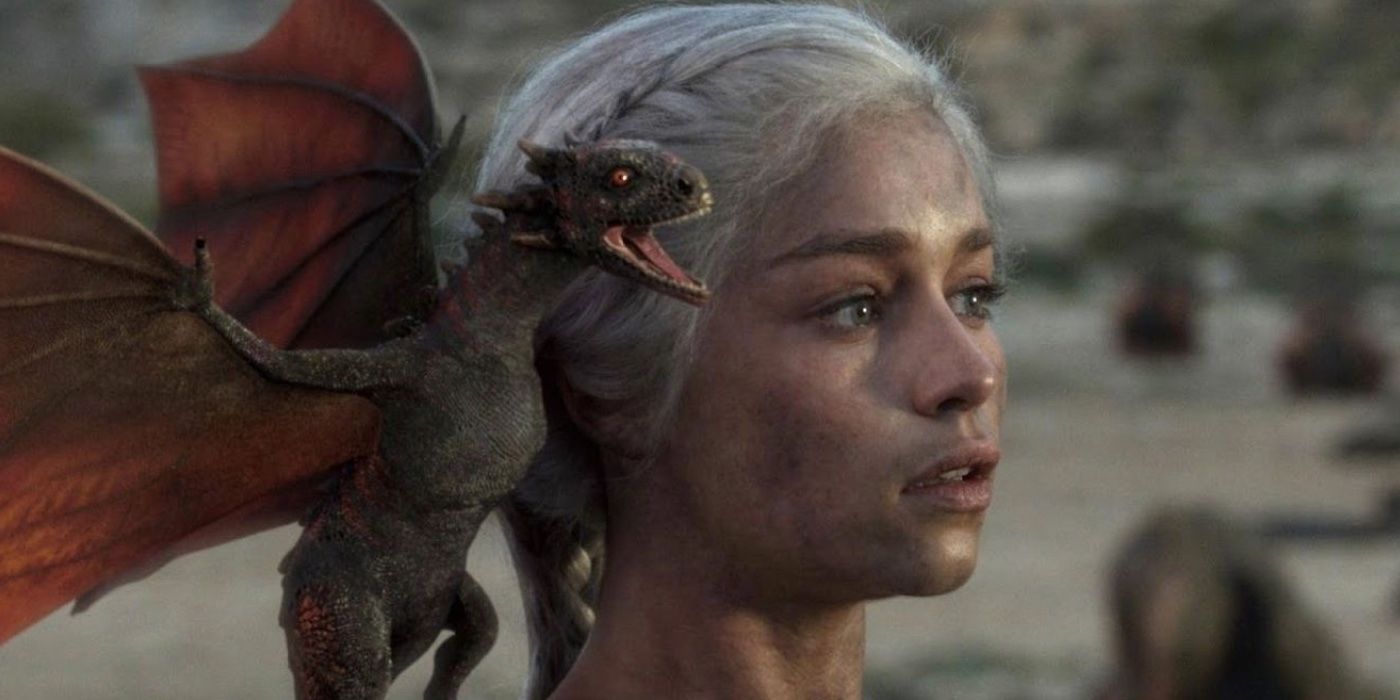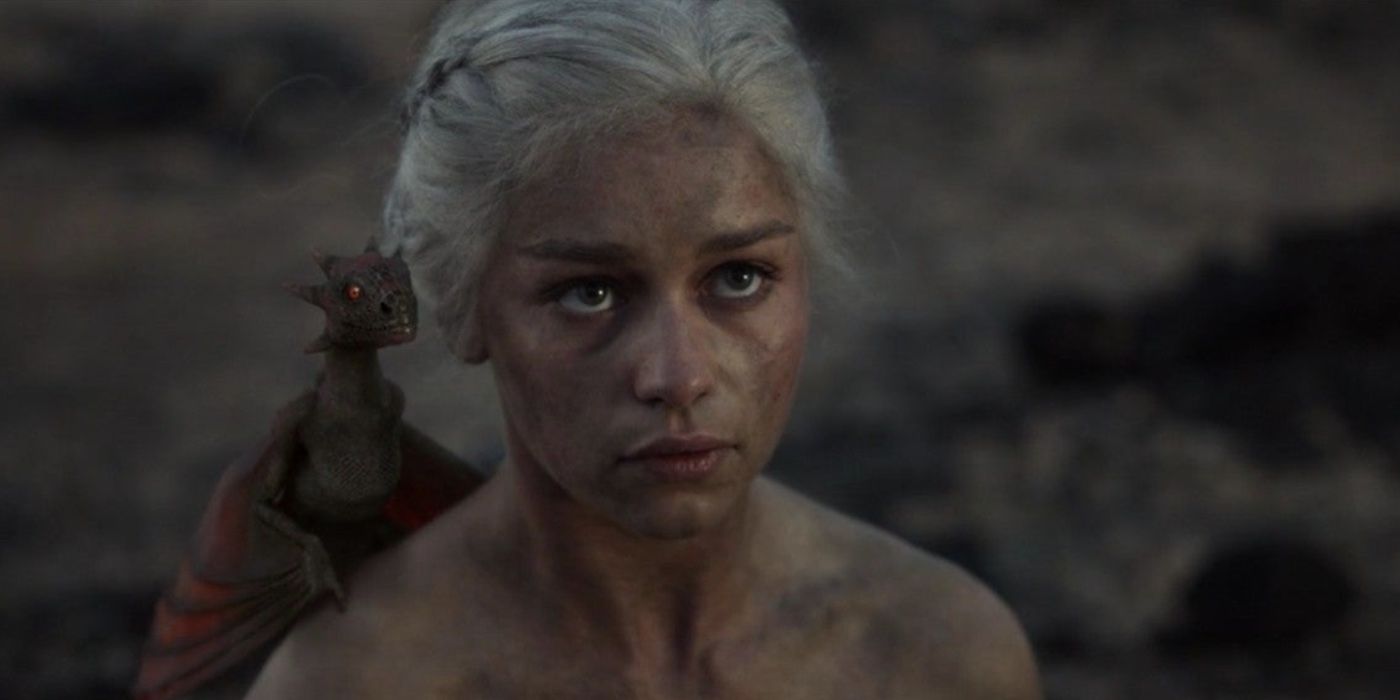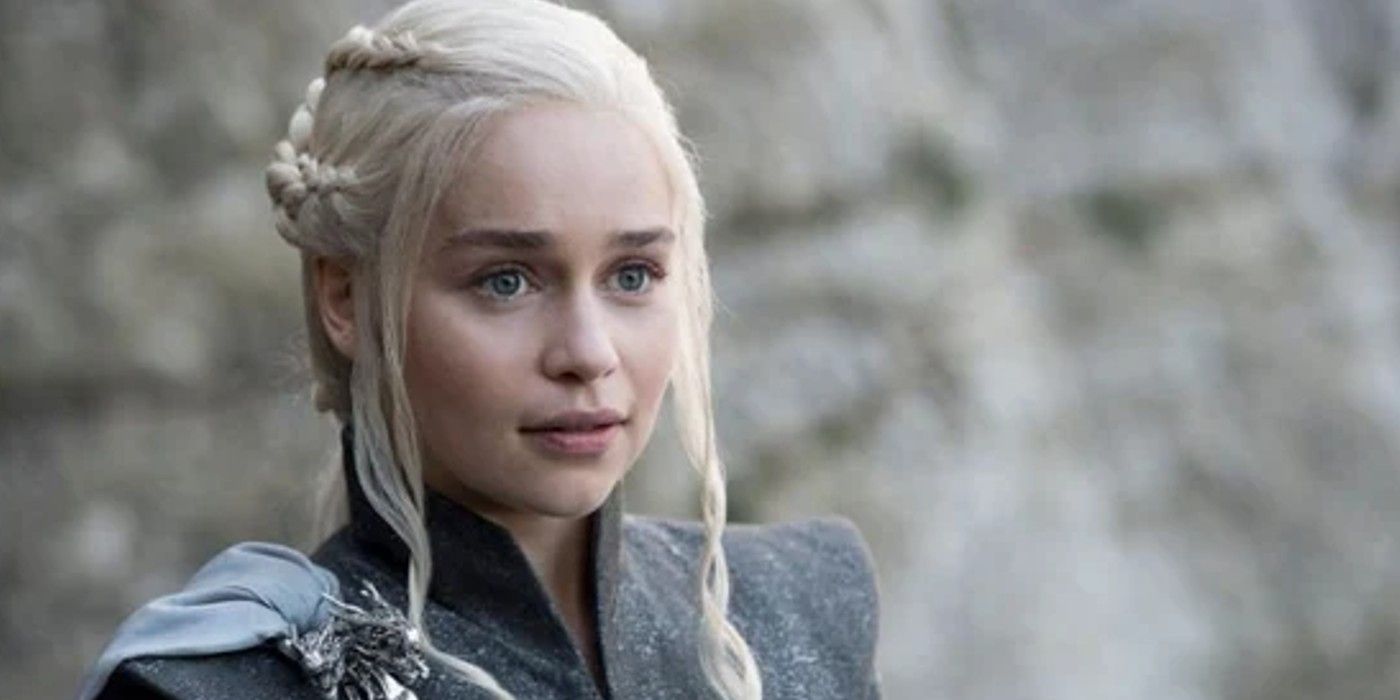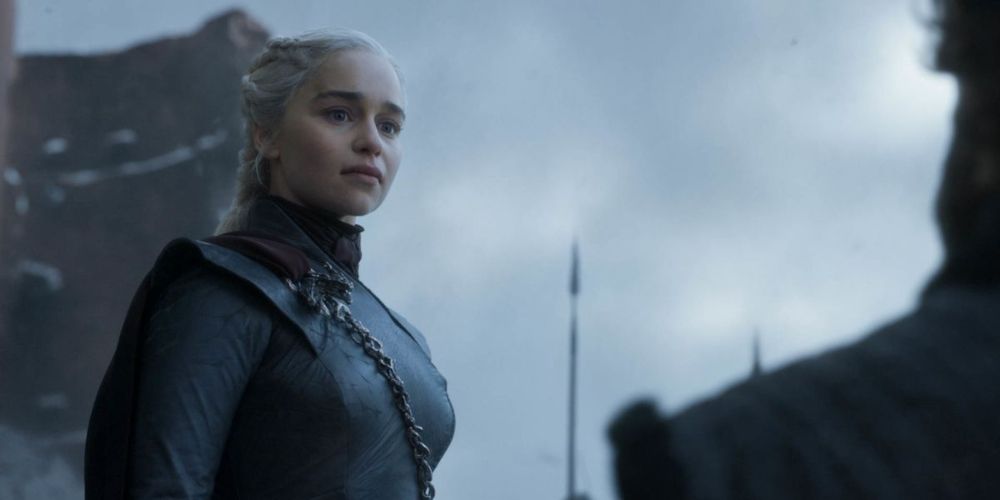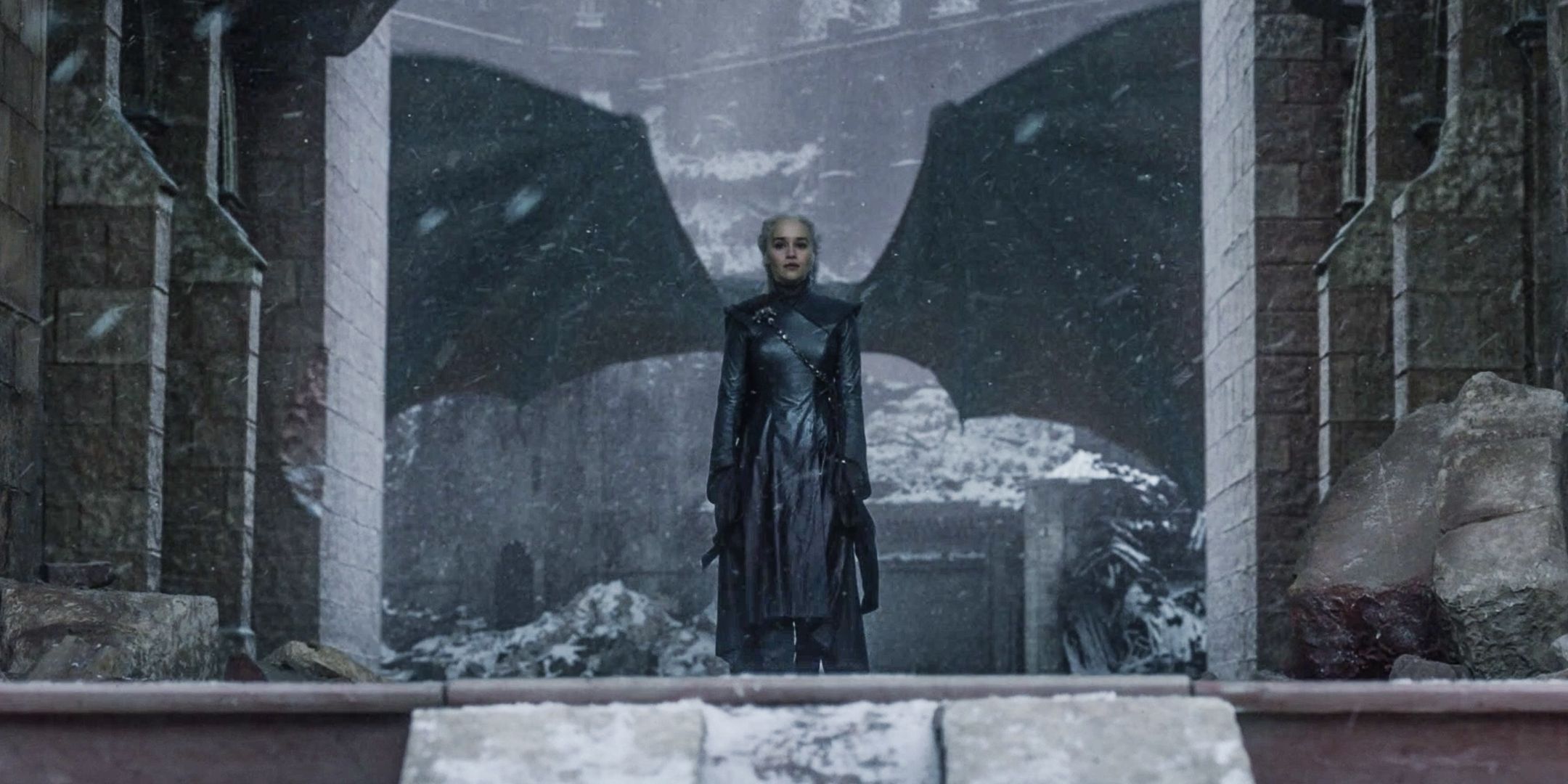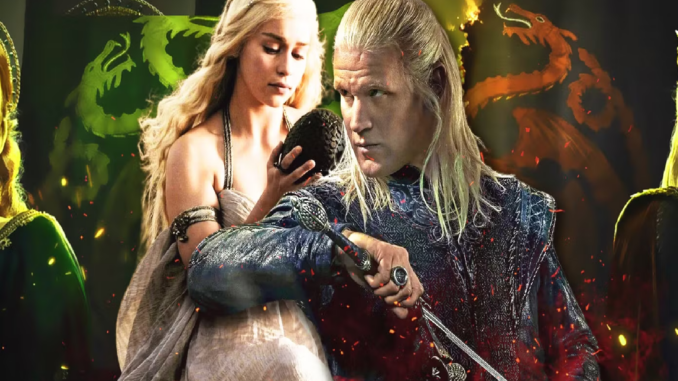
One thing Game of Thrones fans can not let go of is Daenerys Targaryen, and rightfully so. Her turn to “madness” wasn’t set up properly throughout the series, and Game of Thrones hastily jumped to conclusions to make Daenerys like every “mad” Targaryen in history. But Daenerys was never meant to be like every other Targaryen, as House of the Dragon‘s Season 2 finale reminds everyone. Daenerys is what many people would call a hero destined for tragedy. No one knows why she was the “chosen one” to bring dragons back to life, but the use of blood magic and her being the last Targaryen suggests it was her fate.
This very destiny brought her on a journey of liberating Essos and conquering Westeros to take back her family’s throne, only for it to end in her death. Many consider it a character assassination, as she was expected to be the prophesied “Prince That Was Promised.” Season 8 of Game of Thrones made the entire prophecy a messy ordeal, ultimately forcing fans to rely on book lore to determine the true prophetic hero. However, House of the Dragon has put its own two cents in on how Daenerys fits into the overarching story of A Song of Ice and Fire, and it only created a bigger disaster.
Daemon Targaryen’s Last Vision at Harrenhal, Explained
Daemon’s storyline in Season 2 has been the most interesting, mainly because it was never clear where it was going. Nearly every episode found him wandering around Harrenhal, haunted by the ghosts of his past in hallucinations. The witch Alys Rivers was triggering Daemon’s deepest insecurities that pulled out the darkest one of all: the incestuous fascination with his mother, Alyssa Targaryen.
Turns out, it was all leading to the very thing Daemon criticized his brother for: Aegon the Conquerer’s prophecy. In the Season 2 finale, Alys brings Daemon to the weirwood tree at Harrenhal where he sees the very dream that persuaded Aegon to conquer Westeros. He sees Brynden Rivers, a bastard Targaryen later known as the Three-Eyed Raven, the White Walkers, dead dragons, Daemon himself drowning in a lake foreshadowing his own death in the Battle Above the Gods Eye, Rhaenyra on the Iron Throne and Helaena telling him he’s only one part in a story.
Most importantly, Daemon sees three dragon eggs and a woman in a desert, holding three baby dragons. The woman’s face is never shown, but the sight is an uncanny resemblance to Daenerys surviving the funeral pyre in the Game of Thrones Season 1 finale, where all three of her dragon eggs hatched. A small piece of Ramin Djawadi’s Targaryen score, “Finale,” (which uses the Targaryen theme), fully confirms that the woman in Daemon’s vision is Daenerys.
Does the Prophecy Confirm Daenerys Is The Prince Who Was Promised?
Daemon mistakenly interprets Rhaenyra as the hero, and this is used to motivate Daemon to abandon his own pursuit for the Iron Throne in support of his wife. But as fans know, Rhaenyra isn’t the hero. Instead, House of the Dragon makes a bold case that Daenerys Targaryen was The Prince That Was Promised. Rhaenyra was in the dream because Daenerys will be born from her line in the future. The presence of both the White Walkers and Daenerys in the same vision (them being the ice and she being the fire) assumes that she would be the hero to stop the Long Night. Aegon’s exact engraving in his dagger, based on the dream, also supports this theory:
“From my blood comes the prince that was promised, and his will be the song of ice and fire.”
Aegon’s dream is corroborated by the fact that a darkness does arrive in Game of Thrones Season 8, and the red priestesses of R’hllor’s separate visions show that Azor Ahai (a related legendary hero) will be reincarnated as the Prince That Was Promised. Another crucial detail is that the hero would be “born amidst salt and smoke, beneath a bleeding star.” The salt could be the sweat from walking into the funeral pyre, the smoke was from the fire, and a red comet shot across the sky when Daenerys’ dragons were born. The prophecy also foresees the hero wielding a flaming sword called Lightbringer, which could be interpreted as her dragons themselves.
Magic in George R. R. Martin’s work is deliberately vague, so it’s hard to say whether Daenerys brought magic back to the world, or a resurgance of magic allowed her to be “reborn” as the Prince. There’s the coincidental timing of the White Walkers reawakening around the same time Daenerys comes of age. Something about dragons coming back into the world was significant in the Night King moving his army south, however it transpired. The fire of the dragons and ice of the dead balanced the two sides of magic in the world, and Daenerys was the only one who could bring the fire magic back.
Sorry, Daemon’s Vision Doesn’t Clear Things Up
Ultimately, none of it matters in Game of Thrones and House of the Dragon. It’s important to remember that the television universe is a different canon from the books’ universe. Since the books aren’t finished, there’s no saying who the Prince That Was Promised is in that respective universe. Whoever House of the Dragon implies is only relevant to Game of Thrones, not A Song of Ice and Fire. Game of Thrones doesn’t answer who this hero was with two plotlines: Arya killing the Night King and Daenerys torching King’s Landing.
Now, the Prince doesn’t necessarily have to kill the Night King. They could unite the realm and stop the darkness in other ways, like Daenerys bringing her dragons to Westeros. But by that logic, Jon Snow could also be the Prince. Like Daenerys, he was born from Aegon the Conquerer and Rhaenyra’s line. As a Stark and a Targaryen, he was both of ice and fire. The Lord of Light brought Jon back to life to serve a greater purpose: to unite the Southern and Northern armies to stop the Long Night. Should the prophecy be taken literally in the context of Daenerys becoming evil, Jon Snow is a more fitting Prince That Was Promised. But he also had nothing to do with the red comet nor the resurrection of dragons in the world.
The safe option is to say that both Jon and Daenerys are the Prince That Was Promised together. But unluckily for Jon, Aegon had no dream of him. The television universe’s Aegon only dreamt of Daenerys. An argument can be made that maybe the Prince can help stop the darkness, but also indulge in the darkness themselves. It could explain Daenerys’ turn to evil. But without Game of Thrones‘ clarification on who is responsible for leading humanity to victory in the grander picture, right now Aegon’s vision is a grave misstep. House of the Dragon would’ve been better off keeping its nose out of where it doesn’t belong.
